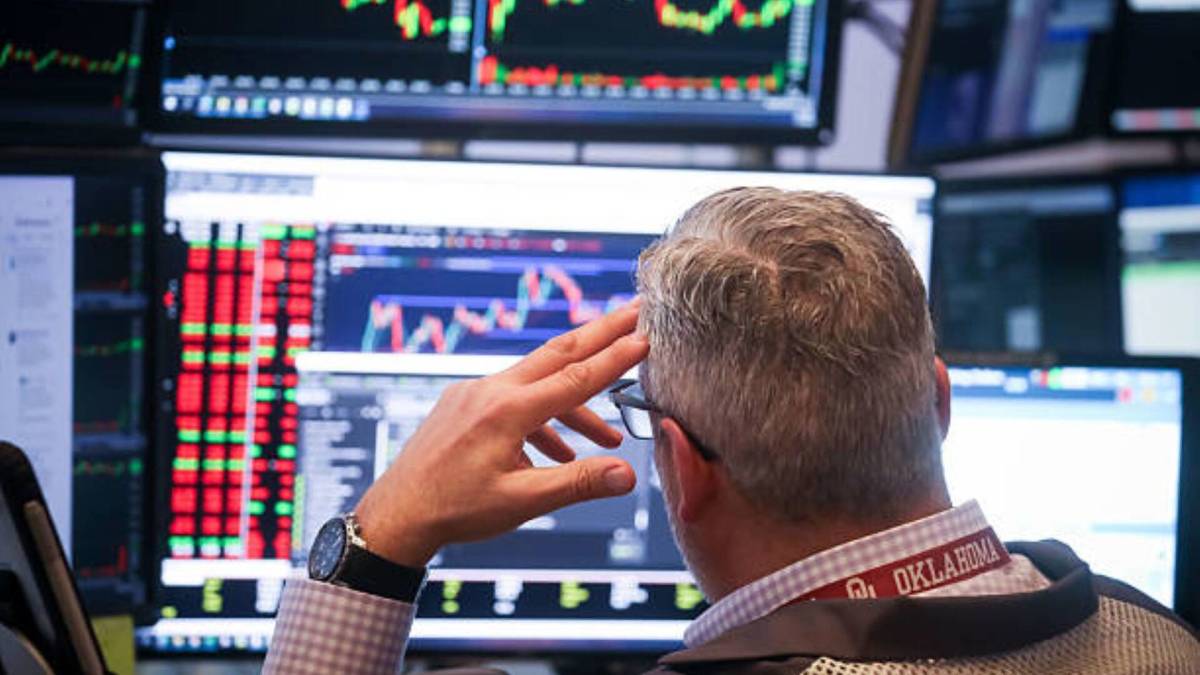The S&P 500 and Nasdaq have been on a tear since April 9, when President Trump paused most reciprocal tariffs, clearing the way for trade deals and reducing fears that tariffs would derail the U.S. economy, sending it into stagflation (low growth/high inflation) or outright recession.
After falling 19%, nearly into bear market territory this spring, the S&P 500 has gained 30% and the Nasdaq has jumped 41% from its early April lows. Much of the move rests on the shoulders of technology stocks, which were hit hardest by tariff announcements this spring, and have bounced back strongly.
The SPDR Technology ETF (XLK) is up 47% from its April lows, but that only hints at the strength from early April lows, particularly in areas like artificial intelligence, quantum computing, and space technology:
- Palantir: up 111%
- Nvidia: up 92%
- IonQ: up 88%
- Rocket Lab: up 199%
Stock market gains, however, have outstripped Wall Street’s estimates for earnings growth in the coming year, sending the S&P 500’s valuation, as measured by the forward price to earnings ratio, back to levels last seen in February, when stocks began their painful 19% drop amid President Trump’s tariff announcements.
With valuation arguably stretched and significant gains already witnessed, it wouldn’t be off base to think stocks could be due for a break.
Only time will tell what’s next for stocks, but long-time stock market watcher Walter Deemer observed a relatively uncommon signal last week that suggests stocks may only be getting started.

Bloomberg/Getty Images
Walter Deemer notes volume surge is usually an early bull market sign
Deemer has seen his share of bull and bear markets. His career stretches back to 1963 at Merrill Lynch, where he worked under the legendary technical analyst Bob Farrell. He also held senior roles at Putnam in the 1970s before starting his investment newsletter in 1980.
Deemer retired in 2016 but still tracks the market using the same indicators he always has, and on Friday, he observed a significant spike in stock market volume that usually precedes big moves.
Related: Bank of America resets inflation forecast ahead of PCE report this week
The gains on Aug. 22 were so substantial that they erased much of the damage in the prior week’s retreat, sending the S&P 500 and Nasdaq up 1.5% and 1.9% by the close. The Dow Jones Industrials also rallied 1.9%, reaching a new record high of 45,632.
Importantly, the move happened on heavy enough volume to capture Deemer’s attention.
“Friday was a 91.5% upside day, which we usually see towards the beginning of a move, not after an extended one. (I report; you decide.),” wrote Deemer in a post on X, formerly Twitter.
The percentage is calculated by dividing the up volume by the up and down volume, or UVOL/(UVOL+DVOL). When the ratio exceeds 90%, it can be a harbinger of good things for stocks.
“To spot an important market bottom, almost as it is happening, requires a close examination of the forces of supply and demand – the buying and selling that takes place during the decline to the market low, as well as during the subsequent reversal point.” – Paul Desmond, Lowry’s Reports Inc.
In a 2002 research study by Paul Desmond of Lowry’s Reports, Desmond noted that historically, 90% plus readings “produce very powerful probabilities that a major trend reversal has begun, and that the market’s Sweet Spot is ready to be savored.”
The stock market rallies on Fed optimism after wobble
The S&P 500 generated back-to-back gains of over 20% in 2023 and 2024, partly on hopes that the Fed’s hawkish monetary policy in 2022 and early 2023 had broken the back of inflation, allowing it to switch gears to cuts to support the jobs market.
More Experts
- Bill Ackman pours billions into 2 tech stocks amid AI boom
- Morgan Stanley analyst’s surprising take on stocks after record run
- Gen X & your 401(k): New lifetime income options are here
The Fed’s dual mandate is low unemployment and inflation, a tough ask given that the two often contradict each other. Lower rates can spark job growth but fuel inflation, while the opposite happens when rates are raised.
The dynamic means the Fed takes its time before pivoting on policy to reduce the risk that its decisions cause more problems than they fix.
Still, as expected, rising unemployment and inflation, which retreated below 3% last year, allowed the Fed to cut rates by 1% into year’s end. Most expected more cuts in 2025, but the Fed has sat on its hands awaiting data amid newly enacted tariffs, which are considered inflationary.
The Fed’s hesitation has created uncertainty for investors, given that lower rates drive economic activity, business sales, and profit growth.
That uncertainty was on full display earlier this month. A worse-than-hoped-for jobs report on Aug. 1 led most to expect the Fed to resume rate cuts at its next meeting on September 17, helping stocks rally.
Then, on August 12, July’s Consumer Price Index inflation report showed inflation rising, causing stocks to retreat.
The Nasdaq had six consecutive down days until stocks reversed sharply on Aug. 22, after Fed Chairman Jerome Powell opened the door to rate cuts in a speech in Jackson Hole, Wyoming, triggering the upside volume signal Deemer highlighted.
Todd Campbell is long Nvidia, Palantir, IonQ, and Rocket Lab shares.
Related: Fed official sends dire warning on US economy
#Longtime #retired #analyst #bold #stocks #rare #signal